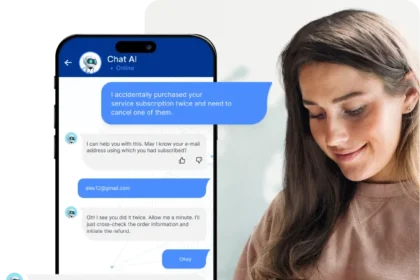AI tools are your shortcut from “idea” to “income.” If you can prompt, package, and publish, you can turn creative sparks into digital products that actually sell, fast. 💸
🚀 Why AI tools are your new creative co-pilot
AI tools don’t replace imagination — they amplify it. From text-to-image engines to writing copilots and audio models, today’s AI tools let solo creators prototype faster, iterate more, and ship at “internet speed.” That’s the edge: less time wrestling software, more time crafting value. For a plain-English primer on generative AI and why it unlocks new product categories, see Wired’s guide and explainers. (WIRED)
Real talk from the feed
- “It felt like plugging my brain into a studio. Draft → iterate → done.” — a TikTok user
- “I pre-sold a Notion template, then used AI tools to finish fast.” — a Redditor
- “I’m still the art director. AI just moves the pixels for me.” — an X user
🎯 What to sell: 12 profitable digital products you can build with AI tools
AI tools shine when you package outcomes, not effort. Here are product types that convert — and the AI angles that make them fly:
- Print-on-demand artwork (posters, tees, canvases): Prompt cohesive collections, upscale, then mock up. Wired’s coverage explains why text-to-image models exploded and how creators put them to work. (WIRED)
- Template packs (Notion, Google Sheets, Canva): Draft layouts with AI tools and auto-generate variations for niches.
- Course assets (slides, worksheets, lesson outlines): Rapid-draft lessons, then human-polish.
- Stock image & icon sets: Generate consistent styles; bundle by theme.
- KDP interiors & ebooks: Structure chapters with AI tools, add your voice and expertise.
- SFX & background music: Use AI composition as a base; master and license.
- Social content kits (hooks, captions, carousels): Batch ideation plus scheduling prompts.
- Website copy bundles (home/offer/FAQ): Draft, then edit for brand and compliance.
- Lead magnets (checklists, playbooks): Turn audience pain points into quick wins.
- Podcast kits (show notes, highlights, titles): Summarize and package episodes.
- Presentation themes: Generate color systems and slide layouts with AI tools.
- Micro-SaaS helpers (no-code + AI): Tiny utilities that solve one job extremely well.
For trendlines on how AI is reshaping creator workflows, Forbes’ creator-economy coverage is a quick scan. (Forbes)
🧠 The core stack: AI tools that do the heavy lifting
- Text & strategy: ideation, outline, critique loops using AI tools.
- Visuals: text-to-image for concepting/production; background removal and upscalers for polish.
- Audio: composition, mastering, and cleanup; stem separation.
- Metadata & SEO: keyword discovery, title tests, FAQ scaffolding.
- Polish & packaging: brand guidelines, product descriptions, store assets — templated and elevated by AI tools.
🧩 Your 7-step blueprint: From prompt to pay-day (in one weekend)
1) Pick the pain point
Choose a specific use case (e.g., “new Etsy shop owners need editable banner kits”). Specific problems sell. Validate with quick polls or comments.
2) Prototype with AI tools
Generate 5–10 variations. Ask the model to critique outputs against your audience’s needs. Iterate — fast.
3) Systematize quality
Create a mini style guide: fonts, colors, spacing, and “do/don’t” examples. Save prompts as reusable recipes so your AI tools stay on brand.
4) Package the product
Bundle deliverables + instructions. Include a usage license and an update policy. Templates sell better when buyers know exactly what to do in 10 minutes.
5) Build a magnetic listing
Lead with the outcome (“Launch clean shop visuals in 30 minutes”). Use 5 benefit bullets, 3 FAQs, and mockups. Social proof beats adjectives.
6) Launch, then relaunch
Post a teaser thread, a 30-second video demo, and a limited-time bonus. Gather feedback, upgrade v1, re-promote. Many creators find that packaging and relaunch cycles are where sales pop.
7) Track the right metrics
Monitor conversion rate, refund rate, cost per acquisition, and time-to-first-value. For a quick metrics mindset, skim a trending piece on BigTrending, then come back and build.
🧪 Prompt recipes that actually work (copy/paste friendly)
- Collection consistency (visuals): “Generate 8 cohesive [style] [subject] images for a [target audience] bundle. Enforce consistent palette [hex], negative prompts [list], and composition rules [list]. Provide PSD-friendly layers, no watermarks.”
- Template upgrader (documents): “Transform this [doc type] into a premium pack with 3 tiers (Starter/Pro/Ultimate). Add branded covers, editable sections, and a 5-step quick start guide. Clarify licensing.”
- SEO & listing polish: “Rewrite title/description using top intent keywords for [platform]. Add 5 benefit bullets, 3 FAQs, and a one-sentence hook under 120 characters.”
Wired’s reporting underscores a simple truth: great outputs come from back-and-forth refinement, not one magic prompt. (WIRED)
💼 Pricing & monetization: Make money while you build
- One-time packs for entry: $9–$39
- Pro bundles with extras (tutorials, updates): $49–$149
- Memberships (monthly drops + community): $12–$29/mo
- Licensing (B2B use): custom quotes; include volume tiers
As adoption grows, creators layer AI tools across workflows — repurposing long-form into carousels, shorts, and newsletters — so one product spawns multiple revenue streams.
⚖️ Legal & ethical guardrails (don’t skip)
Using AI tools doesn’t mean ignoring the rules. The U.S. Copyright Office guidance requires human authorship for copyright claims; disclose AI assistance and describe your human contribution. Start with the official policy page and the PDF guidance. (U.S. Copyright Office)
If you market with endorsements or reviews, the FTC expects clear, honest disclosures. See the updated Endorsement Guides and staff guidance for influencers and platforms. (Federal Trade Commission)
Practical checklist for your listing
- Include a license (personal vs. commercial).
- Disclose where AI tools were used and where human editing began.
- Avoid trademarked characters/brands in generated art.
- Keep a changelog for updates and support.
🧱 Case mini-scenarios (how creators actually ship)
- The Speedy Template Maker: A solo marketer uses AI tools to draft a 20-page Notion CRM. After two editing passes and a clean setup guide, they launch at $29 with a $59 Pro tier. Upsell: a short walkthrough video.
- The Cohesive Art Seller: An illustrator prompts 30 images with one palette, upscales, then packages as a print-on-demand set plus social banners. Launches a $12/mo membership for monthly “drops.”
- The Audio Licensor: A filmmaker blends AI-generated stems with live guitar, mastering a pack for creators who need royalty-safe background scores. Tiered licenses drive B2B revenue.
These aren’t unicorn plays — they’re repeatable systems powered by AI tools and smart packaging.
🛠️ Your go-to workflow (save this)
- Research intent → pull 10 ranking listing titles, map features, note gaps.
- Draft with AI tools → generate 3 options per deliverable; pick winners.
- Human edit → tone, accuracy, accessibility.
- Brand it → covers, color rules, file structure.
- Proof of value → 3 beta users, capture “before/after.”
- List & launch → benefit-first copy, GIF demos, FAQs.
- Retain → updates, customer hub, roadmap votes.
For broader context on creator-economy momentum with AI tools, Forbes’ analyses are handy scans. (Forbes)
📈 Optimize with data (and keep it simple)
Start with four metrics you can influence this week:
- CTR on your listing cover (test 3).
- Conversion rate (aim 3–5% to start).
- Time-to-first-value (can buyers use it in 10 minutes?).
- Refund rate (under 3% means your promise matches reality).
Keep shipping, keep learning, and keep your AI tools sharp.
💬 Community reactions (what people are saying)
- “AI tools felt scary at first — now they’re my rough draft machine.” — a TikTok user
- “I sold my first 50 copies after swapping the title and adding a demo GIF.” — a Redditor
- “The win was packaging, not the prompt. AI tools just made it faster.” — an X user
📚 Learn more (smart, credible reads)
- A plain-English explainer on generative AI and how it unlocked new creative formats. (WIRED)
- Creator-focused tool roundups and trendlines you can act on this week.
🌟 Conclusion: Partner with AI tools, keep the soul human
Your creativity is the engine — AI tools are the turbo. Use them to explore, iterate, and package value, then rely on taste and ethics to ship products you’re proud of. The opportunity isn’t “AI vs. humans.” It’s humans using AI tools to build better, faster, and more profitably than ever.
FAQ: Demystifying AI tools for digital product creation
What are the best AI tools for digital products?
The “best” AI tools depend on your format: text (ideation/editing), visuals (image generation/upscaling), audio (composition/mastering), and metadata (SEO/keywords). For how these categories are evolving, see creator-focused roundups.
Can I make money with AI tools even if I’m new?
Yes. Package outcomes (templates, kits, art bundles), price fairly, and iterate. Many first-timers launch after a single weekend by using AI tools to prototype and then human-polishing the final assets, a trend echoed in creator-economy reporting. (Forbes)
Is AI-generated content original and can I copyright it?
Outputs from AI tools raise nuanced questions. In the U.S., the Copyright Office says human authorship is required; disclose AI assistance and claim copyright in your human-created elements. Start with the official guidance. (U.S. Copyright Office)
Do I need to disclose AI use in marketing?
If you use endorsements or affiliates, follow FTC rules — be truthful and disclose material connections. Useful summaries and updates are available from the FTC. (Federal Trade Commission)
Where can I learn the basics of image models before I start?
Wired’s explainers on generative AI and text-to-image are approachable starting points if you’re new to the space. (WIRED)









